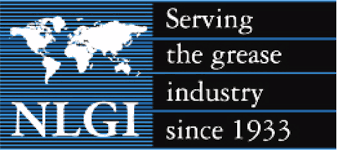I am currently working as a Postgraduate Researcher at the University of Leeds, where I am actively involved in research activities. Prior to this, I successfully completed my master's degree through the renowned Erasmus Mundus joint program, specializing in Tribology and Bachelor's degree in Mechanical Engineering from VTU in Belgaum, India. Further I handle the social media pages for Tribonet and I have my youtube channel Tribo Geek.
Boundary Lubrication Regime
Table of Contents
Introduction
The lubrication in any regimes at the contact interface of any mechanical components is very important because they are capable of controlling the tribological properties such as friction and wear of the interacting surfaces. The boundary lubrication regime is very critical in comparison to the other lubricated regimes because it governs the life of many mechanical components subjected to wear. The boundary lubrication at the roller bearing contact is shown in the Fig-1.

Fig-1 Boundary lubrication regime in bearing rolling contact [1]
Definition:
The boundary lubrication regime is the lubrication regime that occurs under high load and low-speed conditions where the lubricant pressure is not enough to separate the surfaces or support the load applied. There will be asperity-to-asperity contacts between the interacting surfaces at this regime. The amount of this contact depends on the factors such as surface roughness, applied load, fluid film pressure, the elasticity of the material and hardness [2]. The schematic representation of the boundary lubrication regime is shown in the Fig-2. This type of lubrication regime is mainly found in the applications such as bearings, gears, cam, tapped interfaces, pumps, transmissions, etc.

Fig-2 schematic representation of the boundary lubrication regime [3]
Factors affecting the Boundary lubrication regime:
There are various factors that affect the formation of boundary lubricated regimes which include the properties of the surface structures and their compositions, lubricants properties, etc which will be discussed in this section.
Surface structures and compositions: Materials undergo various manufacturing or fabrication stages before they are used in particular applications. There are contaminations in these stages which might affect the surfaces resulting in changes in the bonding structures or chemical compositions. Surface energy is another important factor that might affect the hardness which in turn affects the friction. Also, surface stresses produced during the deformation of the chemical bonds on the surfaces also affect the surface properties. All these factors are very important to be considered to study boundary-lubricated conditions [4].
Surface Roughness: In any lubrication, surface roughness is one of the important parameters for calculating film thickness. The surface roughness can be both microscopic and macroscopic, under the applied load the asperities get deformed either elastically or plastically forming the interface. The initial interface of the surface depends on the relative hardness and relative roughness of the two surfaces. Thus, surface roughness plays an important factor in the lubrication regimes [5]. The transition of the lubrication regimes from EHL to boundary lubrication is shown in the Fig-3.

Fig-3 Surface roughness at the boundary lubrication regime [6]
Lubricants: The properties of the lubricant are another parameter that is important to be considered in studying the lubrication regimes. In the boundary lubrication regime, the effect of the lubricant plays no role as there is asperity to asperity contacts between the surfaces. The lubricant film gets dissolved due to the high load at the surface interface which causes an increase in friction and wear. The effect of different types of lubricants acting at the surface interface is shown in Fig-4.

Fig-4 Different types of lubricants acting at the boundary lubrication regime [7]
Physical and chemical properties:
Physical properties: There are several mechanisms to understand the functions of the boundary lubricating films which include the sacrificial layers, friction modifying layer, low shear interlayer, shear resistant layer, etc. In the case of the sacrificial layer, the theory is based on the fact that the reaction and product layers are weakly bonded which can be removed easily. This provides lower shear interfacial rubbing. Similarly, the other surface layers and their mechanisms are based on different physical aspects at the surface interface in the boundary-lubricated regime [8]. The different types of force distribution at the boundary lubrication are shown in the Fig-5.

Fig-5 Forces acting at the boundary lubrication regime [1]
Chemical properties: The chemical compositions of the lubricants depend on the additives in the lubricants which are micron and sub-micron-sized particles. The lubricant film on the chemical analysis appears to be continuous, patchy, or discrete, Also the colors may be varied based on the chemical composition [9].
Research on Boundary lubrication:
The research on improving the frictional properties at the boundary lubricated condition is very important because the lubricant at this regime is very low which tends to increase the friction. A study investigating the mechanism of friction in boundary lubrication by K Komvopoulos et.al. showed the coefficient of friction depends on the sharpness and the size of the entrapped wear debris or the surface asperities at the interface [10]. There are also studies on improving the tribological properties at the boundary lubricated conditions, one of the main techniques used in improving is a surface modification by texturing or coating. A. Erdemir has reviewed the studies investigated to improve the frictional properties in boundary conditions which summarize that the properties of surface textures such as texture geometry, orientation, density, etc influence the frictional properties [11].
Indentation of Elastic Body by Sinusoidal Surface: Online Calculator
Reference:
[1] https://club.mobilindustrial.com/lube_talk/b/tip_of_the_week/posts/boundary-lubrication-in-greases
[2] Hsu, S.M. and Gates, R.S., 2005. Boundary Lubrication and Boundary Lubricating Film.
[3] https://www.ques10.com/p/50933/explain-boundary-lubrication/?
[4] Rabinowicz, E., (1965), Friction and Wear of Materials, ]ohn Wiley & Sons: New York.






